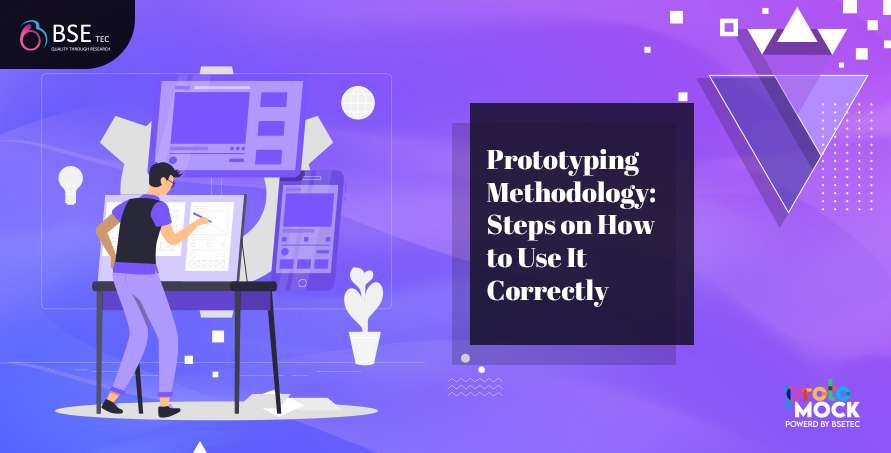Prototyping Methodology: Steps on How to Use It Correctly

Before the final product is out to the world, prototyping allows a company or an entrepreneur to determine whether or not the design of the product will work the way they had intended it to be.
A prototype is basically an early draft or sample of a product, built through wireframes and mockups to test a concept or an idea and elevate the design process by learning about the flaws before initiating the process of creating the product, which also saves from investing valuable resources like time, money and efforts into the product prior to its development.
What are the 4 key components for a successful prototyping methodology?
No matter what methodology you are going to use for prototyping, you must remember these four key components for creating a successful prototype.
- People– The observers and those you are testing the prototype on.
- Object– Interactive and Static, inclusive of the prototype and other objects that people can interact with.
- Location– The place and environment where the prototype is being tested.
- Interaction– Interaction can be between people, digital or physical, or among the objects and the location.
Read about the Prototyping Business Models To Drive Innovation
What are the methods that one can utilize for Prototyping correctly?
To seek validation from the target customers and getting a better insight into the product development process is the main objective of creating a working prototype.
The methods by which one can utilize the process of prototyping correctly are–
- By defining specific objectives and setting goals for each prototype– Sometimes one prototype is expected to do many things, however, it is not a viable way to understand what needs to be improved. Therefore, incorporating your ideas into different prototypes aimed at different purposes is going to give you a much clearer understanding of your issues and shortcomings in making your product more efficient and effective after its development.
- By understanding the product requirements and letting it undergo user testing– Every product has a target audience and obviously has different needs to be met. It is difficult to measure the success of a prototype if it does not meet the specific needs of the user. Therefore, it is very important to understand what you want in your product, which will give you a clear idea of the product needs and what you will need to add or improve to the existing version you have created.
- By examining your budget– One thing to keep in mind when setting an example is your budget. You need to be aware that prototyping only helps you to build the design of a website, app or any digital product by providing a tangible form. However, it is not the end product. Therefore, investing a lot of time and money in just prototyping may not be very profitable during the construction of the actual product itself and might put you in a time and budget crunch situation.
- By revising and repeating the process for refining the prototype– If you have a specific issue with your prototype that does not apply to a finished product, then you have actually done the prototyping successfully. Acknowledge your failures during the prototyping process as this is the real purpose of building a prototype. However, refine the prototype over and over again by repeating the process, until it also meets the needs, preferences and requirements of the user.
Use Protomock for your prototyping needs
Now that you know what methods to use for prototyping, you can use Protomock for meeting your design needs.
Create mockups, wireframes and working prototypes and bring your vision to reality using Protomock.
Contact us for a live demo today!




